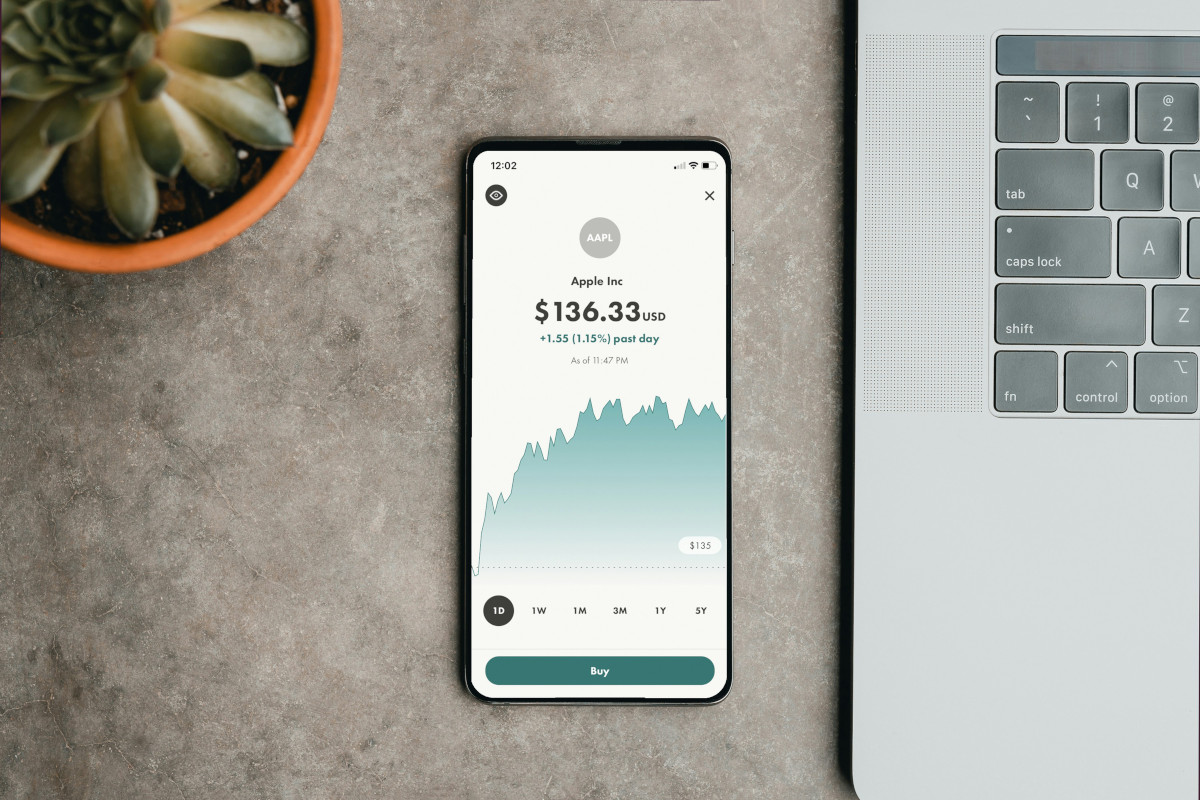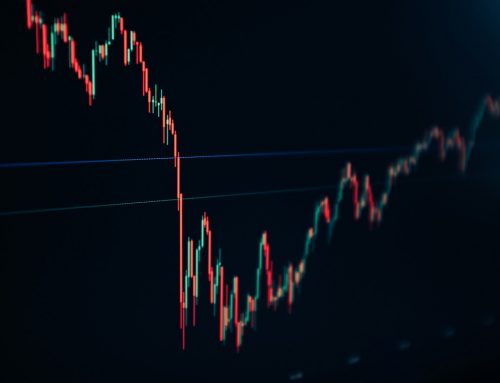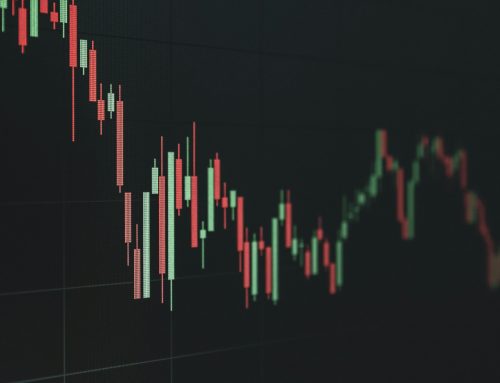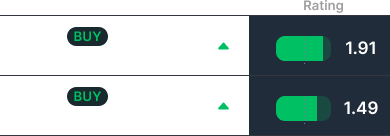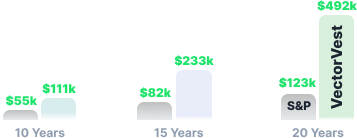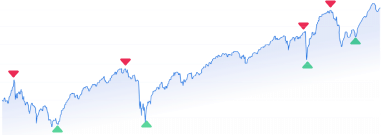The allure of an automatic trading system that tirelessly sifts through market noise, pinpoints opportunities, validates them, and executes trades is undeniable.
Imagine making money on autopilot, sidestepping human error, emotions, and indecision. This is the appeal of an automated stock trading system. Yet, it’s crucial to recognize the potential pitfalls and necessity for human insight within such a framework.
As we delve into the intricacies of computerized trading, we’ll explore the balance of machine precision and human judgment. You’ll learn how to build an automated trading system after we weigh the pros and cons of this approach to investing in the first place.
Plus, we’ll introduce you to VectorVest, a proven trading system that has outperformed the S&P 500 index by 10x over the past 20 years and counting. Discover what a difference our stock analysis software can make in your trading strategy today!
What is a Stock Trading System?
First, what is a stock trading system? This is a process designed to streamline the way investors select, buy, and sell stocks. It operates on a set of predefined rules and algorithms that aim to capture profitable trades based on criteria such as technical indicators, market trends, or economic data.
Before we get into the pros and cons of a computerized trading system, let’s look at the pieces that make up these systems and the various types you have at your disposal.
Components of a Stock Trading System
Key components of a computerized trading system include:
- Data Analysis Tools: These are the backbone of any automatic trading system, processing vast amounts of market data to identify potential trading signals.
- Algorithmic Models: Algorithms are sets of rules that automate the trading process, based on quantitative criteria such as stock patterns or volume changes.
- Execution Mechanisms: Once a trade signal is identified, the system must be able to execute trades swiftly and efficiently, often through direct market access.
- Risk Management Protocols: These rules help to minimize losses, manage volatility, and preserve capital – all of which are essential to safeguard investments.
- Backtesting Frameworks: Before going live, trading strategies are tested against historical data to assess their viability and to fine-tune parameters.
We’ll show you how to build an automated trading system using these components later on in this guide.
Types of Automated Trading Systems
Just as there are various types of stock investment strategies, there are numerous automated trading systems you can employ – each with its own focus and methodologies. Here are some of the most common:
- Trend-Following Systems: These capitalize on long-term movements in market prices, relying on stocks market indicators like moving averages.
- Mean Reversion Systems: These are based on the assumption that prices will revert to their historical average, taking advantage of price fluctuations.
- Arbitrage Systems: These exploit price differences of similar financial instruments across different markets or exchanges.
- Statistical Systems: These leverage mathematical models to identify trading opportunities from market inefficiencies or price relationships.
Algorithmic Trading vs High-Frequency Trading
It’s important that you’re aware of the distinctions between algorithmic trading and high-frequency trading before we go any further.
Algorithmic trading refers to the use of algorithms to execute trades based on specific criteria, without human intervention. It’s a broad term that encompasses various automated trading strategies and can operate over multiple time frames.
High-frequency trading (HFT) is a subset of algorithmic trading. It’s characterized by extremely high speed and turnover rates, with positions held for very short periods. HFTs use complex algorithms to exploit small price discrepancies in the market, often measured in fractions of a cent.
While both styles use complex algorithms and automation, they serve different types of traders with distinct goals and operate on different time scales. Algorithmic trading offers a wide array of strategies for systematic trading, whereas HFT focuses on exploiting small, short-lived opportunities at a high frequency.
Pros and Cons of an Automated Trading System
While the appeal of computerized trading is undeniable, it’s essential that you look at both sides of the coin to determine if this approach makes sense for you. So, let’s unpack the pros and cons of an automatic trading system below.
Advantages of Automation in Trading
The advantages of automation in trading can be summed up as this: they save you time and stress while empowering you to win more trades with less work. It’s that simple.
Automated trading systems can process complex calculations and execute trades faster than any human trader. They can analyze a multitude of market conditions and variables simultaneously, executing trades within milliseconds when predefined criteria are met.
Perhaps most importantly, they eliminate the human emotion that costs so many investors profits. By adhering to a predefined set of rules, automated trading eliminates the fear of loss or the desire for profit, which can lead to rash decisions.
This also speaks to the discipline and consistency that an automatic trading system allows for. The system sticks to the strategy even in volatile markets, providing a level of consistency that would otherwise be difficult for traders to maintain manually.
Traders can also use historical data to evaluate the effectiveness of a trading strategy before risking actual capital, allowing for fine-tuning and adjustments to improve performance.
It’s also much easier to diversify your portfolio with an automatic trading system. You can follow multiple markets and trade various instruments simultaneously, spreading risk and increasing the potential for returns.
Disadvantages and Risks
As you can imagine, there are some serious risks that come with removing human thoughtfulness and decision-making from the equation and letting a computer take the wheel.
If there’s a flaw in the trading algorithm, it can lead to repeated execution of unintended trades, potentially causing significant financial losses.
There is also an absence of nuance in these systems. They follow predefined rules and lack the ability to interpret nuances or take into account new information that hasn’t been programmed into the system.
Traders should also be aware of the risk of creating a system that performs exceptionally well on historical data, known as curve-fitting, but fails to predict future market conditions accurately.
Automated systems may react to false trends or market noise, leading to poor trade execution. They may also struggle to perform in unforeseen market events or conditions not accounted for in the algorithm.
Connectivity issues, power losses, or computer crashes can lead to missed trades or duplicate orders, which can be costly.
Despite the automated nature, these systems require regular monitoring to ensure smooth operation and to make adjustments in response to market changes or technological issues.
Ultimately, the disadvantages of computerized trading equate to a lack of control and context for trading decisions. These systems aren’t perfect – and to really make the most of them, there must be some human involvement.
Let’s talk about how you can balance your skills and knowledge as an investor with the benefits of a computerized stock trading system below.
The Human Element in Automated Trading
Automated trading excels in efficiency, but it lacks the human insight that can sometimes make or break a trade. Here’s how a human touch can make a difference:
- Judgment Calls: You can assess and react to news and market sentiment in ways algorithms can’t. This human judgment is crucial, especially when unexpected events shake the markets.
- Strategy Adjustments: You can modify trading strategies based on current events or market shifts, something that an automated system might miss without prior programming.
- Risk Evaluation: You can evaluate risks from a broader perspective, beyond what’s coded into an algorithm. This can help avoid significant losses when unusual events occur.
- Learning from Experience: You can learn from the market and mistakes, improving strategies over time. This ongoing learning feeds back into refining automated systems.
In summary, the idea of completely removing yourself from the stock trading system and letting it run entirely on autopilot is tempting – but unrealistic. There will always need to be some level of human involvement if you want to maximize profits and prevent costly errors.
That being said, we’ll show you how to build an automated trading system below if you want to give this approach to investing a try!
How to Build an Automated Trading System
We want to preface this by saying that building an automatic trading system is a methodical process that requires careful planning and attention to detail.
If you don’t feel comfortable in your ability to code or leverage technology, you’re better off investing in a tried-and-true software that’s already been created and proven to work – like VectorVest, the best stock picker and portfolio management system to date.
Nevertheless, here’s how you can create a system that’s robust, reliable, and ready to trade on your behalf.
Defining Your Trading Strategy
Your trading strategy is the foundation of your automated system. It is essentially a set of rules that dictate when to enter and exit trades, how much capital to allocate per trade, and how to manage risk. We have tips on how to pick a stock trading strategy in our blog, but it’s fairly simple and straightforward.
Clearly define what you aim to achieve with your trading system. Are you looking for steady income, capital growth, investing after retirement, or portfolio diversification? Your objectives will shape the design of your strategy.
Then, choose the market or asset class you want to trade. Research its behavior, volatility patterns, and liquidity. Different markets may require different strategies.
Decide on the technical indicators or fundamental criteria that will signal your trade entries and exits. Common choices include moving averages, RSI, MACD, or market sentiment indicators for those trading based on fundamentals.
You also must establish your risk per trade, maximum drawdown, and how you will use stop-loss orders when cutting losses. This is crucial for long-term sustainability. Similarly, you should set clear criteria for taking profits. Will you use a fixed profit target, a trailing stop, or a certain risk-reward ratio?
Determine the times you will trade. If you’re trading stocks, will you avoid the market open or close? We can help you navigate this with our guides on when to buy stocks for beginners, when to sell stocks for profit, and buying/selling stocks after hours.
Selecting the Right Software and Tools
Once you have a set of criteria defined for your trading strategy, you’ll need to find software to bring the strategy to life.
The software you select to build your automated trading system from is everything, as it influences the level of customization you have at your fingertips as well as your systems’ efficacy.
Some brokers offer their own trading platforms with automation tools. For example, Interactive Brokers provides Trader Workstation (TWS), which supports automated trading through their proprietary API.
Or, you can use algorithmic trading software that offers a more comprehensive environment for backtesting and deploying trading algorithms. These platforms typically support multiple programming languages and offer extensive data sets for analysis.
Ensure the software you select is compatible with your trading broker’s interface and offers real-time data feeds, technical indicators, and the ability to backtest and optimize your strategy.
Backtesting: The Key to Validating Your System
Backtesting involves running your automated strategy against historical market data to see how it would have performed. This step is crucial for uncovering any flaws in your strategy and making necessary adjustments.
Use quality data for backtesting to ensure accurate results. Analyze the system’s performance for various metrics, such as profitability, drawdown, and win-loss ratios.
Remember, successful backtesting doesn’t guarantee future success, but it’s essential for fine-tuning your system.
Ongoing Optimization and Adjustment
Financial markets are dynamic, and your automatic trading system should adapt to changing conditions. Regularly review the system’s performance and be prepared to make adjustments to your algorithms as needed.
This might include tweaking your strategy parameters, adding new rules, or disabling certain aspects of the system during major economic events. Optimization should be an ongoing process to keep your system aligned with current market behavior.
Rather Than Build Your Own Stock Trading System, Use the VectorVest System to Win More Trades With Less Work!
While you can certainly take our insights on how to build an automated trading system and put them to the test, we’ve already done the hard work for you.
VectorVest’s stock advisory app is a stock trading system that has outperformed the S&P 500 index by 10x over the past 20 years and counting. It’s called every major market move along the way, keeping our community at the forefront of investing.
The rationale behind the VectorVest system is to provide clear, objective, and actionable insights that help investors make informed decisions without the need for extensive technical analysis skills or financial market expertise.
The core of the VectorVest system is its proprietary algorithms that analyze thousands of stocks daily. These algorithms assess each stock based on three key factors: Value, Safety, and Timing (VST). Here’s the role each plays in informing your trading decisions:
- Value: The RV rating assesses a stock’s long-term price appreciation potential forecasted 3 years out. It compares this to AAA corporate bond rates and risk, offering much better insight than a simple comparison of price to value alone.
- Safety: The RV rating is a risk indicator calculated from a deep analysis of a company’s financial consistency & predictability, debt-to-equity ratio, business longevity, sales volume, price volatility, and other factors.
- Timing: The RT rating is based on the direction, dynamics, and magnitude of the stock’s price movement day over day, week over week, quarter over quarter, and year over year.
Each rating sits on a simple scale of 0.00-2.00, with 1.00 being the average. Learning how to analyze stocks in VectorVest couldn’t be easier – just pick safe, undervalued stocks rising in price to win more trades with less work!
You never have to question your decision-making again – our computerized trading system even gives you a clear buy, sell, or hold recommendation for any given stock at any given time.
Another part of what makes VectorVest the best stock research site is how it brings winning opportunities to your screen on a daily basis in our scanners.
Whether you’re looking for the best stocks to day trade or the best stocks for options trading, the best stocks to swing trade, volatile stocks, good stocks for beginners, falling stocks to buy, or even the best way to invest for retirement – the system can be fine-tuned to your strategy.
That’s not all, though. The system can also be integrated with ProfitLockerPro to eliminate any guesswork, emotion, or human error from executing trades. It uses dynamic trailing stops to lock in profits when they’re there and prevent costly losses.
Whether you’re just getting started building a stock portfolio or are simply ready to harness the power of automated trading systems, it’s time you saw what VectorVest could do for you. Get a free stock analysis and discover the best stock trading system to date!
Closing Thoughts on Automated Stock Trading Systems
Automated stock trading systems offer a systematic and disciplined approach to investing, allowing traders to execute strategies with precision and speed.
By defining a robust trading strategy and selecting the right software tools, investors can leverage technology to manage risk, identify opportunities, and streamline their trading process.
With a platform like VectorVest, traders gain access to powerful analytics, pre-curated stock scanners, and dynamic position management, simplifying the journey towards consistent trading success.
Our blog has more great investment resources like what drives stock prices, how to select stocks for swing trading, the best day of the week to buy stocks, technical analysis vs fundamental analysis, market timing, investing in a down market, how to live off dividends, swing trading vs day trading, and more.
At this point, though, it’s time to integrate the best stock analysis app into your trading strategy, leveraging the power of technology to win more trades with less work and stress. Invest in a VectorVest subscription today and elevate your trading to new heights!
What you should do next…
- Get our latest blogs delivered right to your inbox, subscribe to our newsletter.
- The market moves fast! Get our most current evaluation of this stock with our FREE stock analysis tool.
- Looking for stock picks? Not sure if now is the right time to buy/sell? For a limited time, enjoy the full benefits of a 30-day subscription to VectorVest for only [offer_txt] (usually up to [saving_txt]/month) . Get access to our full list of screeners showcasing our top stock picks that tell you exactly what to buy, when to buy, and when to sell.

